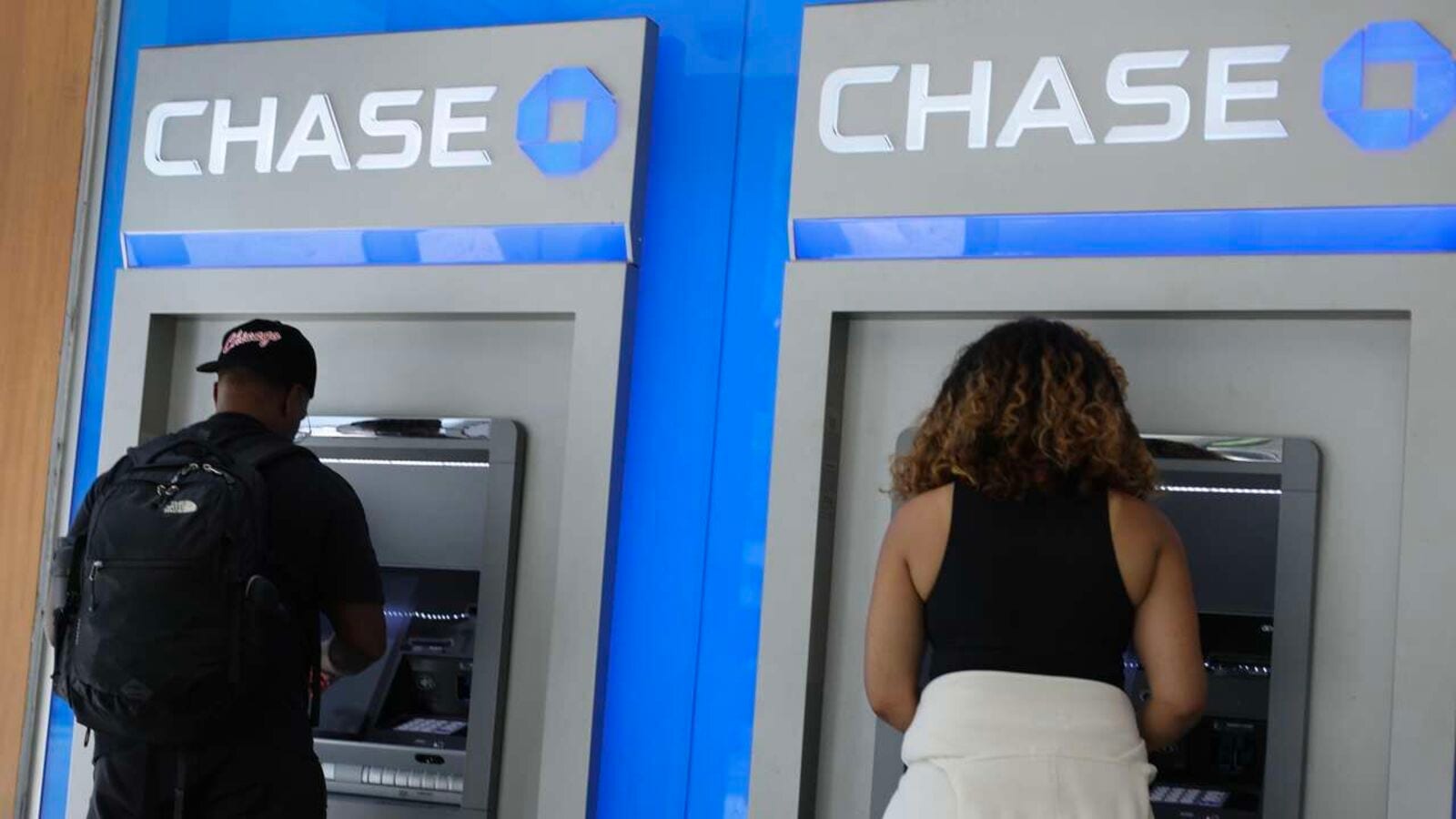Four major financial institutions-Blackrock, JPMorgan Chase, Morgan Stanley and Wells Fargo reports Friday income from the first quarter. JPMorgan, the largest bank in the country, and Morgan Stanley supplied both top and bottom-line beats. The profit per share at BlackRock, the world’s largest asset management company, and Wells Fargo came in before the estimates of analysts, while the income of the first was in line and the top line of the latter came in a little light.
The S&P 500 hit a fresh high in mid -February, before trading war fears for markets of a cliff. The results conquer part of the sale, but they do not reflect the hectic sale of the past weeks after the tariff levels of Draconian 2 April Liberation Day were unveiled (and later partially put on hold).
The result is that the first quarters themselves are little more than a footnote compared to management commentary.
When it comes to income results, investors are often more interested in future -oriented guidance than figures for the past quarters, but that applies especially at a time with unprecedented rates that hang over the markets. On the one hand, it is reassuring that there were no worrying warnings, such as companies such as Delta Air Lines and Walmart offered earlier this week, before the tariff break: that 90-day expansion may have had that companies had the feeling that they had a breathing space to revise in profit-in-the hope of dealing.
But on the other hand, those deals are not allowed to come out. And it seems that under normal circumstances, investors could expect large banks to increase their prospects if the rally would continue in January and February.
The problem is that management commentary pointed to many constant worries, because Flip-Flopping policy is growing growth and business prospects and the global status of the US.
Blackrock CEO Larry Fink – who said on Monday that most CEOs believe that the US is in a recession – have rejected that point and noticed that capital expenses are falling, in a CNBC interview Friday morning. He said that the market underestimates how high inflation could spine and that the US needs a trade agreement with China. While the ‘power of our capitalism’ is still alive, the US now acts as a destabilizing force in the world, he warned.
JP Morgan noted that consumer expenditure is even in the brackets with a lower income but that figures can be deceptive, because Americans for the expenditure for the tariff-induced inflation. The business customers take a wait -and -see attitude, especially smaller companies, because few feel able to make long -term decisions at the moment. CEO Jamie Dimon said that the most important thing is that trade agreements are inked as quickly as possible.
Wells Fargo, on the other hand, said at her conference call that consumers felt stressed with a lower income, even when the overall consumer spending remained stable. “We expect persistent volatility and uncertainty and are prepared for a slower economic environment in 2025, but the actual outcome will depend on the results and timing of the policy changes,” said CEO Charles Scharf.
Morgan Stanley noted that trade stresses and weak initial public offers were further weighted on mergers and acquisitions, and by expanding the IPO of the company and the advisory pipelines. Moreover, if the rates push the yields higher, that will increase the loan costs and reduce business confidence.
Wednesday’s rate responsibility was a welcome development for the market, to the point that David Lefkowitz, head of the UBS Financial Services head of Equities Americas, thinks: “We may have achieved peak policy uncertainty.”
That would be a crucial bending point, he notes, because shares often go lower as long as policy uncertainty is high. “So if the uncertainty of here decreases, it is a key wind for shares,” writes Lefkowitz. “But we are clear about the path ahead. Trade negotiations with American trading partners will be a challenge and take the time. There may be setbacks on the way … CEO commentary on this point will be important in the coming profit season.”
Consensus income-per-share estimates for the S&P 500 this year still baking even double-digit growth at $ 267, a figure that seems too rosy, since even modest rates will decrease. Companies can bypass this quarter to lower their figures for the entire year, but if the similarities are not concluded and considerable clarity has won 90 days-one quarter of it now just make it the look on the road.
Raymond James’ Tavis McCourt argued earlier this week that the S&P 500 introduced the sale within the rich value, reminiscent of the recession of 2001 – what that cannot do can be more pain – and that investors must forget this year and concentrate on 2026 win.
Indeed, some investors may want to look beyond the Easter celebration of this week and go to Christmas immediately.
Write to Teresa Rivas on teresa.rivas@barrons.com







